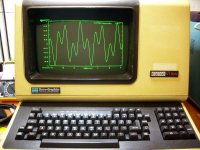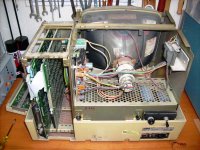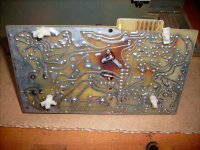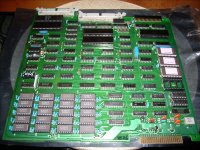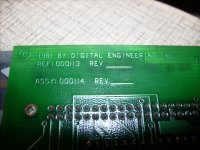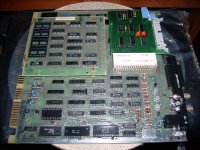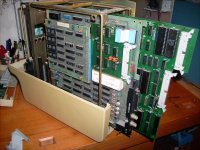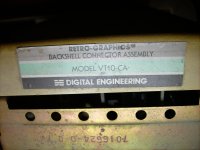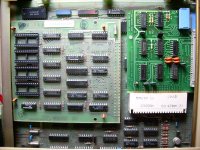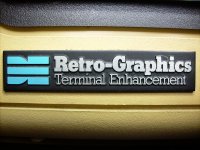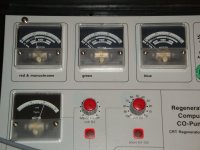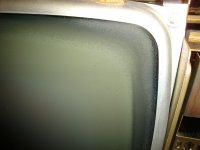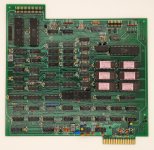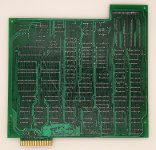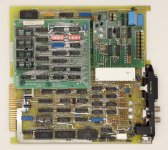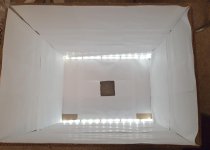GanjaTron
Experienced Member
- Joined
- Jan 11, 2007
- Messages
- 201
Hi folks,
out of the blue I got my chance to own a real VT100 when I came across this baby literally sitting on a trash pile. It had a PSU problem (blown switching trannie and startup cap), but that was a cinch to fix with the tech manual on hand.
Apart from the basic logic board, this VT100 contains an additional VT640 board by Digital Engineering in the cardcage, apparently part of the RetroGraphics enhancement. I understand this is a Tek401x emulation, and managed to test it with gnuplot. That's as far as I got. Anybody know anything more about this upgrade, in particular where to get documentation?
The rear connector panel includes a round 7-pin lightpen connector (see pic), although the lightpen appears to have been lost. Was this part of the RetroGraphics package or an optional extra? Any idea what type of pen was used? The connector doesn't look familiar.
Lastly, the video output is distorted on the right side; it's slightly compressed vertically. I rearranged some of the magnets inside, but the result isn't satisfactory, and there are no keystone/pincushion adjustments on the (Elston) CRT board.
The problematic diode/cap combo on the CRT board was replaced in the early 90s (according to the cap's datecode) but checks out fine, so I didn't replace it. Having said that, the board is significantly charred in that location (see pic)!
Thanks for any help & info!
--GanjaTron
out of the blue I got my chance to own a real VT100 when I came across this baby literally sitting on a trash pile. It had a PSU problem (blown switching trannie and startup cap), but that was a cinch to fix with the tech manual on hand.
Apart from the basic logic board, this VT100 contains an additional VT640 board by Digital Engineering in the cardcage, apparently part of the RetroGraphics enhancement. I understand this is a Tek401x emulation, and managed to test it with gnuplot. That's as far as I got. Anybody know anything more about this upgrade, in particular where to get documentation?
The rear connector panel includes a round 7-pin lightpen connector (see pic), although the lightpen appears to have been lost. Was this part of the RetroGraphics package or an optional extra? Any idea what type of pen was used? The connector doesn't look familiar.
Lastly, the video output is distorted on the right side; it's slightly compressed vertically. I rearranged some of the magnets inside, but the result isn't satisfactory, and there are no keystone/pincushion adjustments on the (Elston) CRT board.
The problematic diode/cap combo on the CRT board was replaced in the early 90s (according to the cap's datecode) but checks out fine, so I didn't replace it. Having said that, the board is significantly charred in that location (see pic)!
Thanks for any help & info!
--GanjaTron

